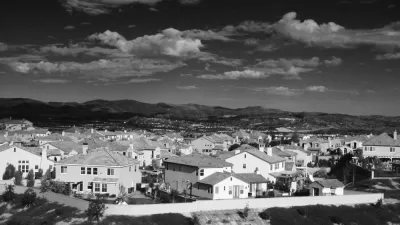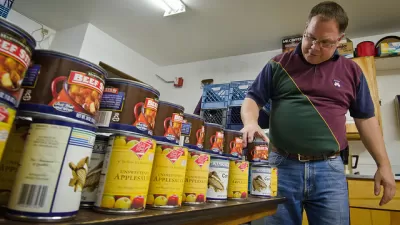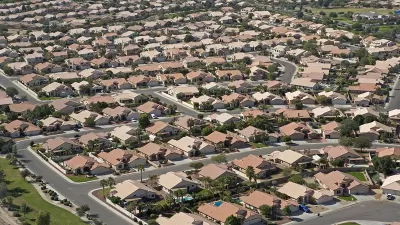From 2000-2011 the number of poor Americans living in the suburbs increased at a rate double that of the country's cities. The result is that more poor people now live in the suburbs than in cities. A new book examines this troubling trend.
Although elected officials and service providers "have yet to catch up to this new picture," the suburbanization of poverty "has been no quirk of the recession," says Emily Badger. "It began before the housing market crashed, and will inevitably tax communities unaccustomed to housing the poor well into and beyond the recovery."
A new book by Elizabeth Kneebone and Alan Berube, Confronting Suburban Poverty in America, "[paints] a new picture of poverty in America as well as the best ways to combat it."
So, why is the suburbanization of poverty so troubling? Because anti-poverty efforts "designed for dense urban neighborhoods transplant poorly onto suburbia," notes Badger. "We’ve seen that the suburban safety net – it’s much thinner, it’s much patchier, and it’s spread over greater distances," Kneebone says.
In addition, the auto-dependent land use patterns found in America's suburban communities exacerbate poverty. "Many suburbs, for instance, don't have the kinds of public transit networks that can connect impoverished neighborhoods to job opportunities," says Badger.
"All of this means that if the geography of poverty has dramatically changed over the last decade, we'll have to spend the next decade (and likely more) thinking about how to address it in its newest forms," she adds.
FULL STORY: The Suburbanization of Poverty

Maui's Vacation Rental Debate Turns Ugly
Verbal attacks, misinformation campaigns and fistfights plague a high-stakes debate to convert thousands of vacation rentals into long-term housing.

Planetizen Federal Action Tracker
A weekly monitor of how Trump’s orders and actions are impacting planners and planning in America.

San Francisco Suspends Traffic Calming Amidst Record Deaths
Citing “a challenging fiscal landscape,” the city will cease the program on the heels of 42 traffic deaths, including 24 pedestrians.

Defunct Pittsburgh Power Plant to Become Residential Tower
A decommissioned steam heat plant will be redeveloped into almost 100 affordable housing units.

Trump Prompts Restructuring of Transportation Research Board in “Unprecedented Overreach”
The TRB has eliminated more than half of its committees including those focused on climate, equity, and cities.

Amtrak Rolls Out New Orleans to Alabama “Mardi Gras” Train
The new service will operate morning and evening departures between Mobile and New Orleans.
Urban Design for Planners 1: Software Tools
This six-course series explores essential urban design concepts using open source software and equips planners with the tools they need to participate fully in the urban design process.
Planning for Universal Design
Learn the tools for implementing Universal Design in planning regulations.
Heyer Gruel & Associates PA
JM Goldson LLC
Custer County Colorado
City of Camden Redevelopment Agency
City of Astoria
Transportation Research & Education Center (TREC) at Portland State University
Jefferson Parish Government
Camden Redevelopment Agency
City of Claremont





























